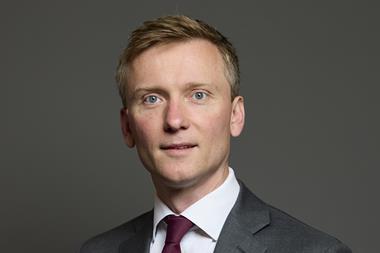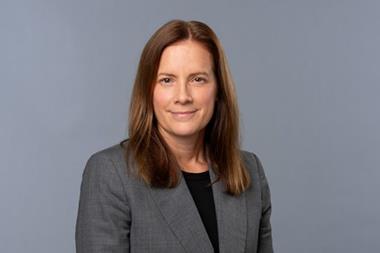Recent years have seen a general trend within the UK pensions industry from equities into bonds, according to Joanne Segars, policy director at the National Association of Pension Funds (NAPF) who is taking over from Christine Farnish as chief executive.
“We have seen changes to schemes’ attitude to investment and investment profiles not just over the last year but over the last few years,” she says. “It is in response to several factors, not least the growing liabilities due in part to increasing longevity. But another factor has been the regulatory environment and the need to reduce risk base levels. And this need to reduce the riskiness of pension funds and scheme specific funds require a closer matching of assets and liabilities.”
And while last year’s equity upturn saw a reduction in deficits, the risks to schemes that are now so obvious on company balance sheets will continue the trend, she adds.
But fixed income had a difficult time last year, notes Chris Parrott, pensions manager at the Comet pension scheme. “It has not performed that well, to be honest, but it’s a difficult environment; we understand it’s difficult and attempt to adapt to it. But the way we’ve set the fund up is not to expect the investment strategy to perform absolutely brilliantly in all markets at the same time. An important principle for us is protecting the downside so that we can get some stability as far as funding is concerned for the employer.”
Some 30% of Comet’s assets are in a gilts and bonds portfolio. “The active global bond allocation accounts for a further 10% and the absolute return fund’s target is 5%,” Parrott says. “We recognise that equity had a really booming year last year and fixed income didn’t, in comparison, but over the lifetime of an economic cycle all things should contribute positively.”
And indeed, last year’s story was the robust equity performance.
“We saw a 27% increase in the scheme’s assets to £198m (€294m) comprising £18m of new contributions and nearly £30m from investment performance,” says Parrott. “The driver was mainly the equity markets, but also real estate. We have 30% in passive equity funds, split evenly between the UK and overseas, and we have a 10% target allocation in unconstrained global equities.
“The target allocation for real estate is 15% but we are about 1% underweight because we make our property investment through UBS’s Triton fund which is now closed to new money. We are currently considering whether to leave it as is, with the additional 1% spread more or less evenly throughout the rest of the portfolio, or to investigate other options.
“We recognised that having such a diversified allocation would probably be best achieved by investing in a series of pooled funds. And that is the case with everything we’ve got. We don’t actually have a segregated fund anywhere; we just buy units in specific funds.”
“The best way of describing our performance last year would be ‘reasonable’,” says Penny Green, chief executive of the Superannuation Arrangements of the University of London (SAUL) Trustee Co, a multi-employer pension scheme, open to colleges and other institutions with links to the University of London. “We returned 23.6% to end-March. We were happy with that but our numbers were slightly below our scheme-specific benchmark of 23.9%.
“In addition to our expected rate of return we look at two other numbers: the actuarial valuation assumption and what we believe we can reasonably expect to receive in the longer term when making various assumptions about equity risk premiums etc. And both of those are well below 23.6%.”
The outturn was largely due to the equity market performance, Green adds. “We still have quite a high equity component to our asset allocation, of 70%, and 30% bonds.” And derivatives? “The only thing we’ve got is a currency overlay mandate but we securitise that back to US equities, so it’s in the equities space.”
“We have two sub-funds,” says Peter Scales, chief executive of the London Pension Funds Association (LPFA). “We call one active because it’s got active employers and with contributors and pensioners so it’s like a normal pension fund, and we have a pensioners’ sub-fund which is virtually closed. It’s old Greater London Council-type pensions, so has hardly any contributors and it has quite a different investment strategy. The active sub-fund’s performance last year was 23.2% against a benchmark of 24%, and the pensioners’ sub-fund had a performance of 9.3% against a benchmark of 10.3%.”
The LPFA active sub-fund had some 75% in global equities, 10% in bonds and 15% in other assets, principally private equity and real estate. The pensioner sub-fund had 15% in global equities, 20% in global bonds on a fairly broad global benchmark and 65% in passively-held index-linked gilts and cash.
“We missed the active sub-fund’s benchmark principally because we probably had too high an allocation to bonds and cash, and alternative assets which we had only just started to accumulate,” Scales says. “But in addition, we went through an enormous transition last year which skewed our results in the final quarter.”
For the pensioner fund, it was the index-linked, fairly well-matched portfolio that let us down, he adds. “However, it was passive and we missed out on the change in yields across the duration spectrum. It isn’t passive now but last year was the fag end of that sort of performance following the transition to new mandates.”
Comet is also reviewing its options. “We are trying to work out what’s overpriced, trying to work out if there are any alternative asset classes that are appropriate for us,” says Parrott. “We are looking at a range of things and with some of them we recognise that we may have missed the boat. But we just continue to keep our options open.”
And what impact will the apparent upward trend in interest rates have on the fixed income side? “I don’t know, but we do understand that the gilt market in particular is a strange animal at the moment,” he adds. “It is possible that we’ll start to look at other things, such as structured products, for example.”
And what about the equity performance so far this year? “It’s quite bizarre,” he says. “We saw our FRS17 deficit almost halve in three months from January to April and then move back the other way. We live in an odd world. That’s why we have a diversified strategy. If we are entering the stage where we see a really good rally from equities fall back we hope we will see it replaced by a rally from another part of the portfolio or at the very least a minimising of the reduction in overall asset values.”
“We have started appointing smaller managers with smaller mandates instead of one or two large managers with major, maybe multi-asset, mandates,” says Green. “Currently we are focusing on equities, looking at geographical areas where the markets are less efficient. For example, European emerging markets are attempting to converge with the Euro-zone so there are inefficiencies and therefore opportunities to be had. What we are looking at there is benchmark-unaware management and we are in the process of agreeing two equity mandates which will have slightly different approaches. They will require investment in equities or cash but the measurement will be against the gilts index. “We are also looking at Asia. The guidelines for an Asian mandate that we have recently funded simply say ‘investment in Asian equities’ and don’t refer to a benchmark, although there is a benchmark floating around there somewhere, referred to in the fees.
“The other area we will be looking at over the next 18 months is the bond part of our assets because we need those to worker harder for us as well.”
SAUL has the advantage of being well funded, at about 100% on an ongoing basis, so it does not have a deficit, and it is relatively immature, Green notes. “So we don’t have to take a short-term view of the assets, rather we can take a long-term approach. As a result there are no factors driving us into complex derivatives strategies or illiquid investments. It could be argued that private equity might be something we should look at, given our long-term view, although I don’t believe it’s a particularly attractive asset class at the moment.”
“Swap strategies are not really relevant to us because we don’t need to cashflow match, given our relative immaturity and the open nature of the scheme. And with the major issues of transparency associated with hedge funds I wonder about their relevance to SAUL when there are managers who are now starting to be prepared to offer best ideas funds.”












No comments yet